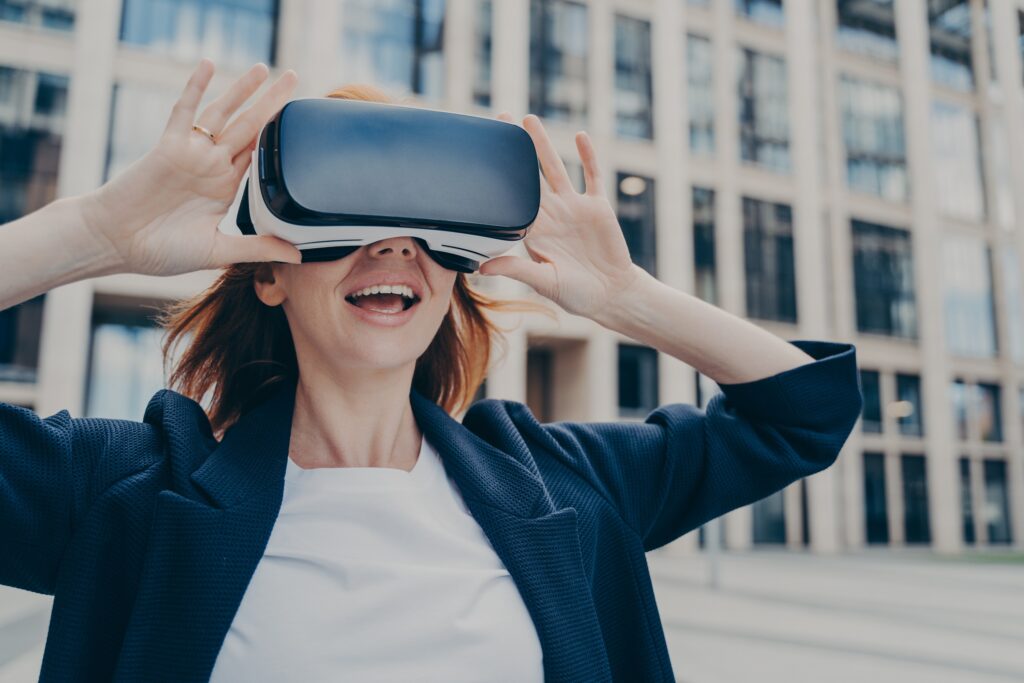
Blurred vision
VR headsets can cause eye strain, discomfort, and blurred vision. It is important to pay attention to your body and stop using VR headsets if you feel discomfort. If you continue to experience eye discomfort, consult an eye doctor.
Blurred vision can also be a sign of a more serious eye problem. If you’re experiencing eye pain or discomfort, it’s important to stop using the VR headset and see an eye doctor. The doctor will conduct a thorough exam and rule out any vision problems.
Poor quality lenses are another common cause of blurry eyes. Poor-quality lenses can cause images to appear distorted and cause discomfort. Clean the lenses to fix blurry vision in virtual reality headsets. Be sure to clean them properly, and use good lighting to do so.
Low-quality lenses can cause distortions in VR headsets. The lenses may have been damaged or are not the proper distance from the eyes. Some headsets have straps that can be adjusted to make the fit more comfortable. If you don’t wear corrective glasses, these may also contribute to blurred images.
Poor-quality cameras and poor lighting conditions can also cause blurred vision with VR headsets. Wearing a VR headset requires that you use a microfiber cloth to clean your lenses. Keep in mind that every face is different. For the best clarity, VR headsets must be adjusted in accordance with your face shape.
Eye strain
When you use a VR headset, you may not realize it, but the constant staring at a digital screen can be tiring for your eyes. You may experience blurred vision and eye twitching if your eyes get tired. There are simple steps you can take that will reduce the effects of virtual reality headsets eye strain.
Limit your VR use. It may sound counterproductive to take frequent breaks, but limiting your use of the headset will help to limit your eye strain. You might also want to limit the time you use your headset each session. Intense eye use can cause you to subconsciously clench your facial muscles and frown. This clenching and frowning can irritate your eyes and cause eye strain.
VR headsets are intended for adults, but there are risks of eye strain and fatigue. Children under 12 should not use VR because of the potential risks to their vision. Children’s eyes are still developing, so they may need corrective lenses in the future. If children are experiencing eye strain from too much VR, parents should take them to the eye doctor.

You can reduce eye strain by taking frequent breaks and keeping your glasses or contact lenses close at hand. Optometrists recommend that computers are at least two feet away from the eyes and smartphones should be at arm’s length. VR headsets, however, are placed closer to the eyes than normal, with the screens only a few centimeters from the eyes. The risk of eye strain is unlikely to be long term, but limiting time and taking frequent breaks are important to prevent eye strain and eye fatigue. Eye drops may be an option to provide additional moisture.
It is important to note that VR headset users should avoid excessive exposure to bright lights. This can cause eye strain, which can lead to headaches and other eye problems. You should consult a doctor before you use a VR headset.
Comfortable
VR headsets place high-resolution screens right before our eyes. These screens have varying degrees of comfort for people with various eye conditions. These factors should be considered when purchasing VR headsets.
VR headsets can cause eye strain if used for long periods. They can be calibrated to adjust for people with different refractive errors but this strain can still cause discomfort and eye pain. However, there is no evidence that VR headsets cause permanent damage to the eyes. VR headsets have not been thoroughly studied for long-term effects. This makes it difficult to ensure that they are safe for our eyes.
Another concern is that VR headsets are heavy. They can also cause strain to our eye sockets and can be hot to the touch. This can lead to eye strain and headaches. VR headset users should take their headsets off often and massage their eyes. This will help reduce eye strain and keep your headset cool.
The most common issue associated with VR headsets is that they are worn for long periods of time. It is possible to break down time into shorter intervals of 30 minutes, but a person should limit their use to a few hours each day. In addition to these issues, it is important to keep in mind that too much screen time can lead to a progression of myopia, a disease causing blurry vision at a distance. Fortunately, there are now VR headsets that can help people who are suffering from this eye condition.
VR headsets can cause headaches, as well as eye strain. Children’s eyesight is still developing, and they should not use VR headsets for long periods of time. If you suffer from eye problems, you should take them to an eye doctor for a complete eye exam.
The vergence-accommodation conflict
Virtual reality headsets are causing an unavoidable side effect: vergence-accommodation conflict. This happens when you are unable to see what is in front of your eyes and look out into the distance. To test whether your virtual reality headset is causing you to experience vergence-accommodation conflict, hold a finger about three to four inches above your eyes. As if you were looking into space, the focus of your finger should cross your eyes.
To avoid this conflict, a headset system may dynamically adjust the distance between its electronic display and the optics block. The headset reduces the motors controlling distance by reducing the actuation time. This is done by using geometry data obtained from the virtual scene.
Problem arises because virtual objects on flat displays are often out-of-synchrony with each other. This is because vergence happens naturally with stereoscopic images, and accommodation occurs when objects are far away from the viewer. Headaches can be caused by the brain receiving contradictory signals about accommodation and vergence. It can also cause eye strain, nausea, and dizziness.